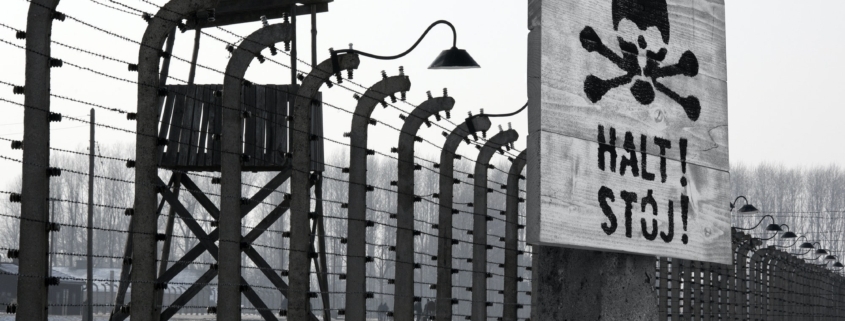Poland’s Auschwitz and Birkenau
Somehow, we always imagined it to be raining at Poland’s Auschwitz and Birkenau, the infamous killing complex of W.W. II. But the sun shone when we toured, led by a Butterfield & Robinson hand-picked guide Dorita Nicz, whose two, non-Jewish uncles were sent to Auschwitz for giving water to an escaped prisoner. One died and the other survived, but not his spirit. “I was a little girl, but I remember he never smiled, “ said Ms. Nicz . He talked only to my grandmother and he kept always a piece of bread in his pocket.”
As Ms. Nicz led us through the camps, she recounted the systematic torture and murder. Although Auschwitz stands as a synonym of man’s inhumanity, Birkenau, built with four gas chambers since the Jews and other prisoners were arriving faster than the Nazis could “liquidate” them, horrified us more.
Although the Nazis set fire to Birkenau as the Allies approached, a wooden barrack remains as well each unit’s brick chimney.
We walked for nearly three-quarters of a mile, passing rows upon rows of chimneys. Each one represented temporary housing for hundreds of prisoners soon to be gassed.
Another B& R surprise: an interview with 86-year-old Kazimierz Smolen, a Polish partisan and survivor of five years imprisonment at Auschwitz, and also the former director of the Auschwitz Museum. In Polish, as our tour leader translated, he told us of life at Auschwitz.
For three months the SS kept him and others standing in a totally dark cell; many suffered strokes. Each morning and evening the SS conducted roll call outside. Weak, starving and barefoot, Mr. Smolen and the other prisoners were often made to do the “bear dance “ by turning around in circles with their arms raised above their heads, sometimes for three or more hours. When the inmates stopped or lowered their arms, the SS beat or shot them.
Food consisted of one litre of herbal tea in the morning and 250 grams of bread in the evening and sometimes soup. Mr. Smolen was one of the 4,000 prisoners forced to build Birkenau, working from 5 am until dark in muddy fields and marshes. Each day 10-15 men died of exhaustion. When the Nazis learned Mr. Smolen could type, they gave him the indoor job of registering those about to be exterminated. By 1942, 3,000-5,000 Jews a day arrived at the camp. “We worked all day and night, but we couldn’t give receipts for so many people, “ said Mr. Smolen .” So we only gave out numbers for about 500. The rest were soon burned in the crematorium.”
By 1944, 10,000 people arrived each day, but only about 4,500 could be burned daily, so bodies were stacked in piles. “You cannot imagine the smell,” noted Mr. Smolen. “When a transport arrived, after the men, women and children were separated by the SS men, we would hear people crying out names of a sister, a son. And then hours later all was silent again,” he said.I asked Mr. Smolen what helped him survive, how did he get through each, horrible day. He looked at me, his blue eyes wide, and sighed heavily. “Friends,” he said. “Each day we found new friends to help.”
And that’s when I cried.



 Great Family Vacations
Great Family Vacations Great Family Vacations
Great Family Vacations CruiseCritics
CruiseCritics Great Family Vacations
Great Family Vacations Washington Times
Washington Times Where to Retire
Where to Retire Great Family Vacations
Great Family Vacations